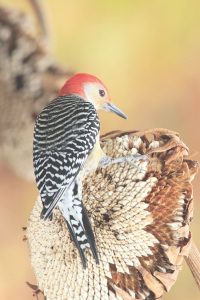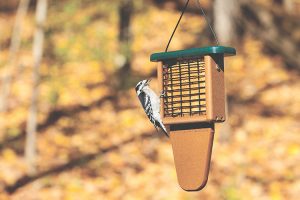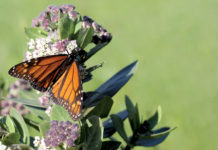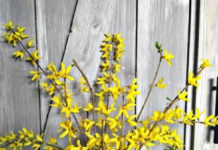By David Saidnawey
Fall is a great time for watching the birds in your backyard and in local parks. There are lots of birds around at this time of year, including adult birds, juvenile birds, and birds migrating through the Two River area. In addition, we will soon see the arrival of winter migrants like white-throated sparrows and dark-eyed juncos. These are birds that live far north of here in the summer and migrate to our more “temperate” climate – at least compared to Canada’s boreal forests – in the winter.
Here are some helpful hints for attracting and enjoying nature during the fall season.
If it was a good growing season in your garden, natural food sources will be plentiful. As your flowers all die back, birds like goldfinches, chickadees and titmice will eat the seeds that form. If you can handle the sight of dead flowers, don’t deadhead your plants! It’s a wonderful food source for birds.
Think about the birds when you do your fall yard cleanup chores. Create a brush pile with the fallen leaves and dead branches that litter your yard. They provide great cold-weather shelter for birds. An added benefit – the decaying plant material will bring in insects that are a great food source for your birds.

Have you noticed that your bird feeder activity slows down in early fall? Birds are busy caching – storing for later use – all of the natural foods that are available in anticipation of our upcoming winter. You may see chickadees, nuthatches, titmice and other birds taking seeds and storing them under tree bark, dead leaves, or knotholes in trees. Blue jays will take peanuts in the shell and bury them in numerous places for later use. Once colder weather sets in and natural food sources disappear, your backyard birds will return to your feeders once again.
Lots of birds molt (shed feathers and grow new ones) in the fall. You may see some funny-looking, bald birds at this time of year. Don’t worry – they’re not sick. Some birds just molt all at once and lose their feathers simultaneously. They’ll grow back before the cold winter weather sets in. Since feathers are largely composed of protein, providing high-protein foods at this time of year – such as peanuts, Nyjer seed, mealworms – will help birds through this stressful period.
As our weather turns colder, birds look for high-fat foods to keep warm. They will bulk up during the daytime to add additional fat reserves, burning the fat in the cold nighttime – just like an internal furnace!

Providing high-fat foods – such as suet, sunflower seeds, peanuts – will help your birds survive cold winter weather.
Water sources become critical in cold weather. Birds need water all year long for both hydration and bathing. Birds will even bathe in cold weather. Clean feathers are much better at insulation from the cold than dirty feathers are. Providing a heated birdbath will help keep liquid water available to birds all year long.
Changing seasons are always a great time to watch the wildlife all around us. Whether it’s in your garden or a local park, get out this fall and enjoy the birds!
David Saidnawey is the owner of Wild Birds Unlimited, Middletown. He has been an avid lover of birds and nature for more than 15 years.














